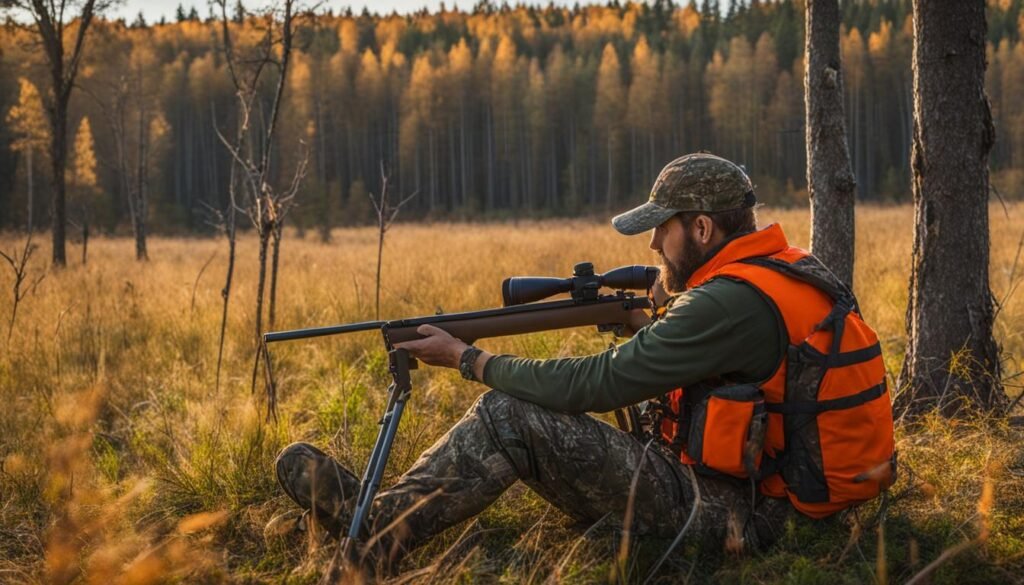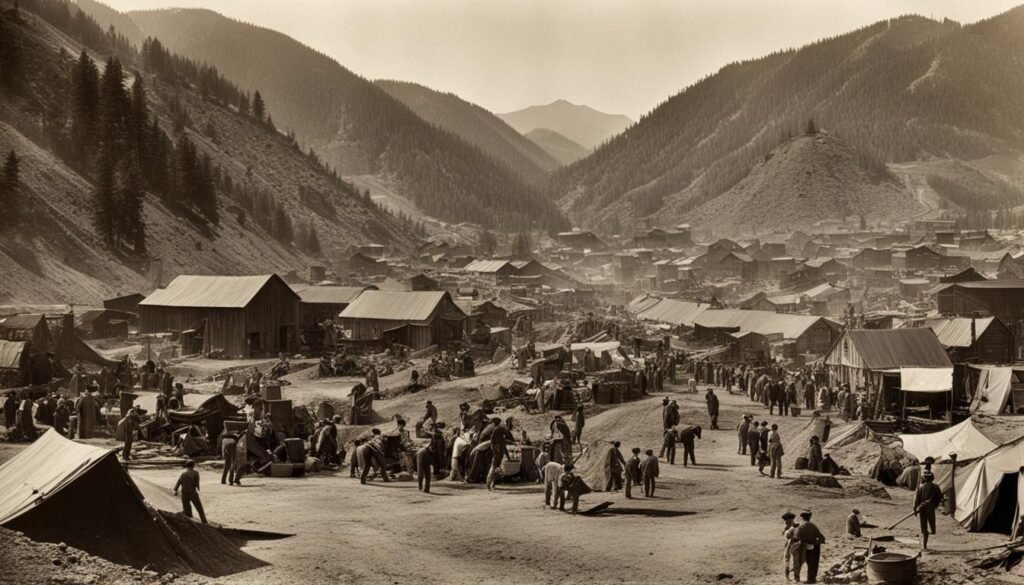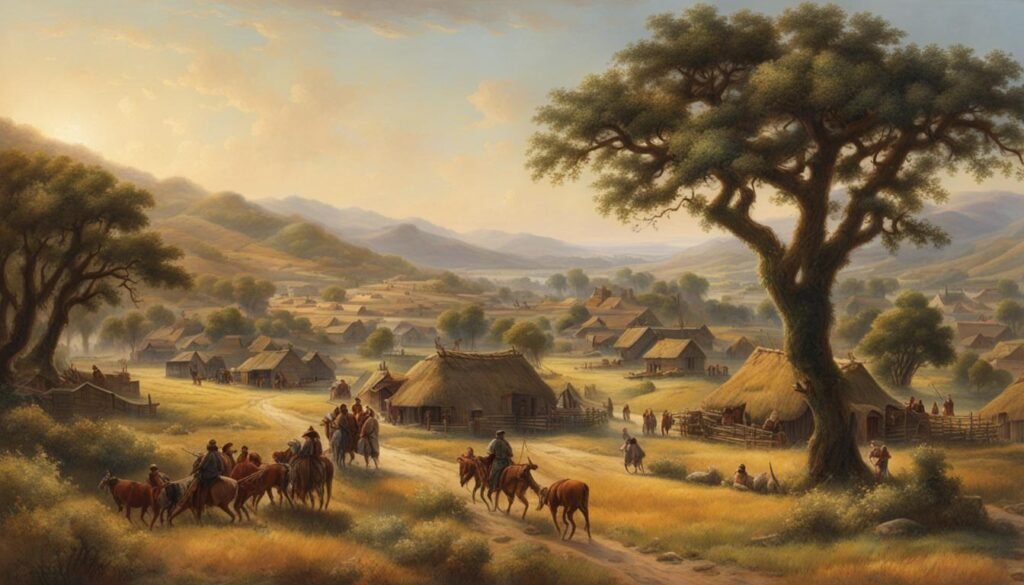As a passionate hunter, I know that deer hunting requires careful preparation and the right strategies to increase your chances of success. Whether you’re a seasoned hunter or embarking on your first season, these expert tips will help you have a rewarding and memorable deer hunting experience.
Key Takeaways:
- Choose the right deer hunting gear, including rifles, camouflage clothing, and tree stands, to ensure you remain concealed and comfortable during long hunting hours.
- Before the season starts, scout your hunting grounds to identify deer trails, bedding areas, and feeding locations for a better understanding of deer movement.
- Employ different hunting techniques such as stalking, tree stand hunting, or spot and stalk hunting, based on your hunting style and the terrain you’re hunting in.
- Gain a deeper understanding of deer behavior and their seasonal patterns to increase your chances of encountering them during hunts, focusing on the rut for more active and aggressive bucks.
- Always prioritize safety and adhere to hunting regulations, including hunting seasons and designated hunting zones, for a responsible and legal hunting experience.
Essential Gear for Deer Hunting
Having the right gear is essential for a successful deer hunting experience. When it comes to deer hunting gear, there are a few key items that every hunter should have in their arsenal.
First and foremost, a reliable deer hunting rifle is crucial. Look for a rifle that offers accuracy, power, and reliability. Brands like Browning, Remington, and Winchester are known for producing top-quality deer hunting rifles.
Next, camouflage clothing is essential for blending in with your surroundings. Choose clothing that matches the environment you’ll be hunting in, whether it’s dense forest, open fields, or mountainous terrain. Brands like Sitka, Under Armour, and Mossy Oak offer a wide range of camouflage options that provide both comfort and concealment.
In addition to a rifle and camouflage clothing, a tree stand can greatly enhance your hunting experience. Tree stands allow you to elevate yourself above the ground, giving you a better vantage point and reducing your scent dispersal. Look for lightweight and sturdy tree stands from brands like Summit and Lone Wolf.
Other essential gear for deer hunting includes a hunting knife, binoculars, a rangefinder, and scent control products. Investing in the best deer hunting equipment will not only improve your chances of success but also ensure your safety and comfort throughout the hunting season.
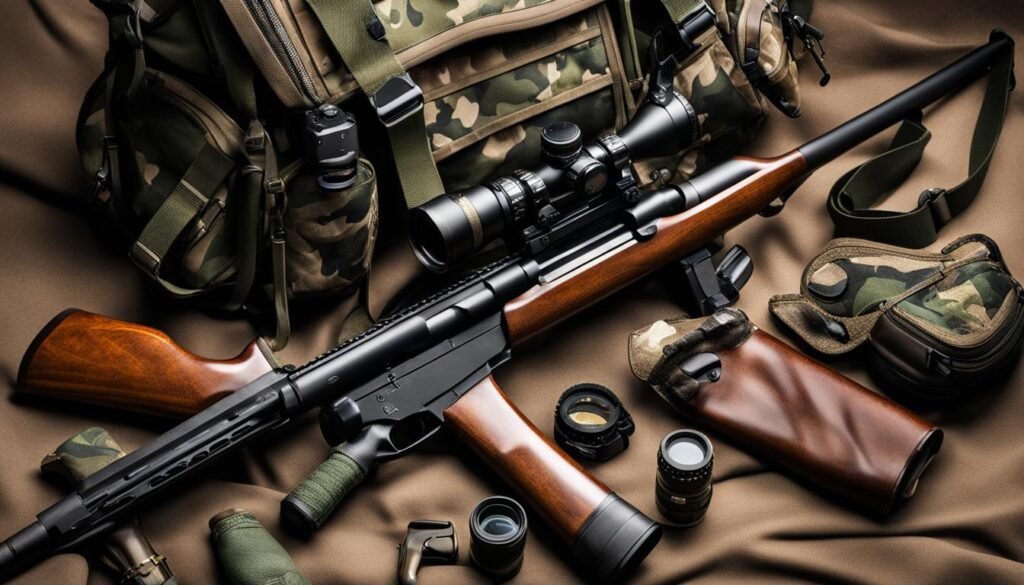
Remember, when it comes to deer hunting gear, quality matters. It’s worth investing in the best gear you can afford to ensure a successful and enjoyable hunting experience. Stay equipped with the right gear, and you’ll be ready to tackle any deer hunting challenge that comes your way.
Strategies for Finding Deer
Finding deer is crucial for a successful hunting experience. To maximize your chances of encountering deer during the hunt, it is essential to employ effective strategies and locate the best deer hunting spots. Here are some valuable tips to help you find deer:
- Scout your hunting grounds: Before the hunting season begins, spend time scouting your hunting grounds. Look for deer trails, bedding areas, and feeding locations. Scouting will help you familiarize yourself with the terrain and identify areas likely to attract deer.
- Observe signs of deer activity: Pay attention to signs of deer presence in the area. Look for fresh scrapes and rubs on trees, as these indicate recent deer activity. Additionally, search for tracks and droppings along trails or near feeding areas.
- Utilize trail cameras: Setting up trail cameras in strategic locations can provide valuable insights into deer movements and behavior. Check the footage regularly to identify patterns and determine the best times to hunt.
- Study topographic maps: Topographic maps can be a valuable resource for identifying potential deer hotspots. Look for features such as ridges, valleys, and water sources that could attract deer.
- Go early and stay late: Deer are most active during the early morning and late evening hours. Make it a point to be in your hunting spot well before sunrise and stay until after sunset to maximize your chances of encountering deer.
- Stay downwind: Deer have a keen sense of smell, and they can easily detect human scent. To avoid alerting deer to your presence, always approach your hunting spot from downwind and use scent-blocking sprays or clothing.
By following these strategies and locating the best deer hunting spots, you can significantly enhance your chances of a successful deer hunting season. Happy hunting!
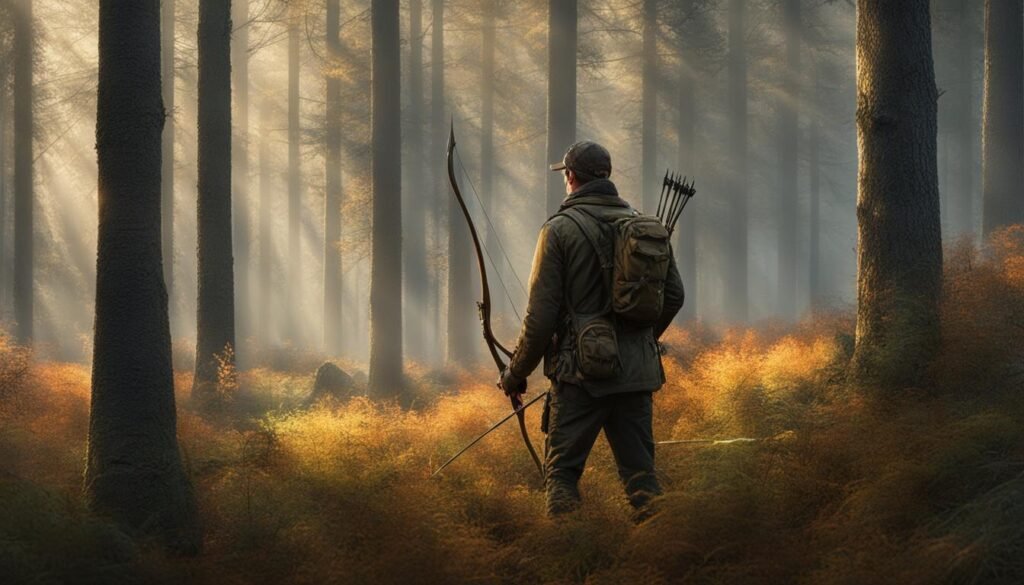
Hunting Techniques for Deer
When it comes to deer hunting, there are various techniques that you can employ to increase your chances of success. Each technique requires different skills and strategies, so it’s important to choose the one that suits your hunting style and the terrain you’re hunting in.
Stalking
One popular technique is stalking, which involves quietly tracking and approaching deer on foot. To be successful at stalking, it’s essential to move slowly, keeping an eye out for any signs of deer activity. This technique requires patience, stealth, and the ability to read the deer’s behavior to close in for a shot.
Tree Stand Hunting
Another effective technique is tree stand hunting. This method involves sitting in a tree stand and waiting for deer to pass by. Tree stands provide an elevated position that helps conceal your presence and gives you a better vantage point to spot deer. Remember to choose a tree stand that is sturdy, comfortable, and suited for your hunting location.
Spot and Stalk Hunting
A third technique is spot and stalk hunting. This approach combines glassing for deer from a distance and then stalking closer for a shot. Spotting scopes or binoculars are essential for spotting deer from afar. Once you’ve located a deer, use natural cover to stealthily move closer for a better shot opportunity. This technique requires a blend of patience, observation, and agility.
Remember, regardless of the technique you choose, it’s crucial to adhere to ethical hunting practices and local regulations. Always prioritize safety and respect for wildlife while enjoying the thrill of the hunt.
Understanding Deer Behavior
When it comes to deer hunting, understanding deer behavior is essential for a successful hunt. Deer have specific patterns of movement that vary depending on the season and their mating behavior.
During the rut, which is the mating season for deer, bucks become more active and aggressive in their search for mates. This makes the rut an ideal time for hunting, as bucks are more likely to be on the move and less cautious of their surroundings.
Knowing the specific deer hunting seasons and regulations in your area is also crucial. Each state has designated hunting seasons, including open season dates and specific hunting zones where hunting is permitted. In California, for example, the deer hunting season varies by region and the specific species being hunted, such as the California mule deer.
By understanding deer behavior and the specific hunting regulations in your area, you can plan your hunts more effectively, increasing your chances of a successful harvest. Additionally, staying up to date with hunting regulations ensures that you are hunting legally and responsibly.
Conclusion
Deer hunting is a thrilling outdoor activity that offers both rewards and challenges. By utilizing expert tips, investing in the right gear, and implementing effective strategies, you can greatly enhance your chances of having a successful deer hunting season. Whether you’re a seasoned hunter or a beginner, following these guidelines will maximize your hunting experience.
One of the key aspects of a successful deer hunting season is prioritizing safety. Always remember to adhere to hunting regulations, such as obtaining necessary licenses and permits, understanding hunting seasons and bag limits, and using appropriate and ethical hunting practices. Safety should be your top priority to ensure a responsible and enjoyable hunting experience.
Moreover, planning and preparation are crucial for a fruitful hunt. Utilize scouting techniques to identify deer movement patterns and locations. Familiarize yourself with the terrain and prime hunting spots in your area. This knowledge will allow you to strategically position yourself and increase your chances of encountering trophy deer.
In your quest for trophy deer hunting, keep in mind that success is not solely measured by the harvest. The experience of being in nature, observing wildlife, and enjoying the camaraderie with fellow hunters is equally important. Respect for wildlife and preservation of natural habitats should always be at the forefront of your mind as a responsible hunter.
FAQ
What are some expert tips for a successful deer hunting season?
Some expert tips for a successful deer hunting season include having the right gear, scouting hunting grounds, using effective hunting techniques, and understanding deer behavior.
What gear is essential for deer hunting?
Some essential gear for deer hunting includes hunting rifles, camouflage clothing, and tree stands. Investing in high-quality gear is important for remaining concealed and comfortable during long hours of hunting.
How can I find deer during the hunt?
Scouting your hunting grounds before the season starts can help you identify deer trails, bedding areas, and feeding locations. Look for signs of deer activity such as fresh scrapes and rubs on trees to increase your chances of encountering them during the hunt.
What are some hunting techniques for deer?
There are different hunting techniques for deer such as stalking, tree stand hunting, and spot and stalk hunting. Each technique requires different skills and strategies, so it’s important to choose the one that suits your hunting style and the terrain you’re hunting in.
Why is understanding deer behavior important for hunting?
Understanding deer behavior is crucial for a successful hunt. Deer have specific patterns of movement depending on the season and their mating behavior. Knowing their behavior will help you determine the best time and location to hunt.
What should I know about deer seasons and regulations?
It’s important to know the specific hunting seasons and regulations in your area, such as open season dates and designated hunting zones. This information ensures that you are hunting legally and within the boundaries set by the authorities.
What is the significance of trophy deer hunting?
Trophy deer hunting refers to hunting for deer with impressive antlers or other prized attributes. Many hunters participate in trophy deer hunting to challenge themselves and obtain a memorable hunting experience.

